What to Know About Fall Pruning Perennials
Table of Contents
All You Need to Know About Fall Pruning Perennials
 It’s Fall again! Fall pruning perennials are what make up a good portion of a gardener’s agenda this season. There are so many other items on the to-do list during the last few months before the cold reaches of winter.
It’s Fall again! Fall pruning perennials are what make up a good portion of a gardener’s agenda this season. There are so many other items on the to-do list during the last few months before the cold reaches of winter.
Because of this pruning perennials can get overlooked. Making sure to work them into the schedule can save a lot of time, money and effort in the spring!
There are thing to consider when planning out the cutting, including the time frame that pruning is best for each plant, the location of the cut itself, and the end result that is being aimed for.

Is it for the health of the plant? (Is the plant suffering from a disease or pest infestation?)
Is getting the plant established the aim?
Is the plant’s growth cycle at the point where a good pruning will result in a spectacular bloom in the coming spring?
What should I use to prune?
What alternative methods to simply cutting back new/above ground growth might be called for at this point in time?
 With so many options, a break-down of what, why, when, how and alternative options is exactly what you need! Fear not, for I have collected answers from my own experience, as well as fellow gardeners and the ever-expanding knowledge-base of the interwebs; so look no further! Let’s get to it…
With so many options, a break-down of what, why, when, how and alternative options is exactly what you need! Fear not, for I have collected answers from my own experience, as well as fellow gardeners and the ever-expanding knowledge-base of the interwebs; so look no further! Let’s get to it…
Why Should You Prune?
Pruning perennials in the Fall is a great way to help get your garden ready for a spectacular bloom next Spring. When you cut back the dead or dying foliage in the fall, you allow the plant to take advantage of the remaining temperate weather.
Even though the plant may be headed into a dormant state, by removing the withering top growth you essentially force the plant to shift gears and focus on root development. This allows for a more well established starting point for the plant when coming out of the winter dormancy.
When Should You Prune?
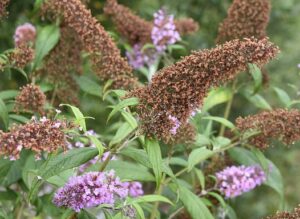 You don’t want to start too soon on pruning your perennials. You want to make sure all the blooms (if you have any) are completely faded or gone before you start considering pruning. You don’t have to wait until the entire plant is brown and withered either.
You don’t want to start too soon on pruning your perennials. You want to make sure all the blooms (if you have any) are completely faded or gone before you start considering pruning. You don’t have to wait until the entire plant is brown and withered either.
The plant will continue growing, even in ways you can’t see, right up until the cold snaps of fall or winter put the growth cycle in abeyance.
This means that when you prune effectively, the plant will expend a little energy healing the places that were cut back, but after that, with nothing left of foliage or stems past the pruning point, the only thing left for the plant to reinforce or expand in it’s growth repertoire is the root system.
Having that more well developed root system allows for more impressive and stronger growth come the next spring. There are some perennials you actually want to wait until spring time to cut back, and you can find a list of some of those further down in this article.
How Should You Prune?
The rule of thumb when it comes to pruning is that you want to leave a good 3-6 inches above the soil line of stem and or leaves.
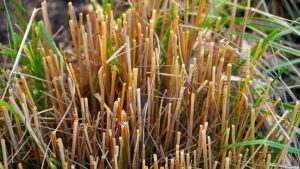
There are several reasons for this. By leaving some of the plant visible, it makes it significantly easier, the next spring, to spot where your underground root systems originate from. This keeps you from accidentally digging up or damaging plants you forgot were there because they were cut too far down.
 Leaving a few inches visible also offers additional protection from the elements when it comes to winter weather.
Leaving a few inches visible also offers additional protection from the elements when it comes to winter weather.
If you live in an area that gets snow or frost, having a portion of the plant to catch the snow above the soil-line allows for a potential insulating feature that will help to maintain more stable temperatures, keeping the plant from suffering any ill effects from dramatic temperature changes.
Things to Consider When You Prune
Clippings that are not from a diseased or pest-ridden/fungal infected plant can go into the compost pile. You can help with the speed and efficiency of your compost pile by mulching your clippings before adding them to the pile.
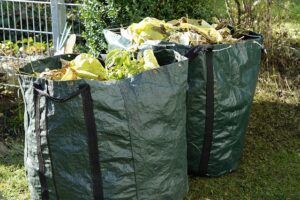 Make sure you are keeping an eye on the ratios of your “greens” and your “browns” (your nitrogen rich additions and your carbon rich additions) so you don’t end up with a nitrogen to carbon ratio that either leaves your compost pile a stinky mess, or an inert lump.
Make sure you are keeping an eye on the ratios of your “greens” and your “browns” (your nitrogen rich additions and your carbon rich additions) so you don’t end up with a nitrogen to carbon ratio that either leaves your compost pile a stinky mess, or an inert lump.
For more information on composting and how to achieve the right balance, check out our article on composting here.
Tips on Pruning Alternatives
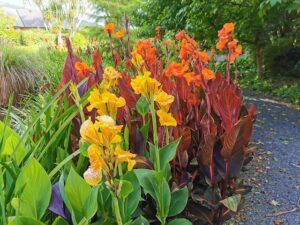 Sometimes pruning by cutting back the plant is not necessary to achieve the desired effect. If you happen to have a perennial that is capable and ready to be divided, go for it! Make sure to check to see if fall is the best time to divide, because every plant has a preferred time for growth, pruning and division.
Sometimes pruning by cutting back the plant is not necessary to achieve the desired effect. If you happen to have a perennial that is capable and ready to be divided, go for it! Make sure to check to see if fall is the best time to divide, because every plant has a preferred time for growth, pruning and division.
When thinking of pruning, think of the local wildlife. If a simple, tidy garden is sought after, pruning and removal of all browning and wilting growth will provide the best results. If one of the features desired is the lure of the local wildlife, perhaps a bit of research would yield unexpectedly strong results.
With the cold winter months ahead, the local wildlife will become dependent on local flora, fauna and feeders in order to sustain itself, or move on until the warmth of spring yields new feeding opportunities.
 What kind of overwintering sustenance the local garden friends prefer? Do there happen to be wildflowers or other types of seeding plants that are on that list in the garden?
What kind of overwintering sustenance the local garden friends prefer? Do there happen to be wildflowers or other types of seeding plants that are on that list in the garden?
If so, then leaving it will provide food in the scarce winter season; along with shelter. With less (if any) active growth or color in the garden during that time, a visit from a friendly garden visitor can keep the winter from seeming as long and cold.
Fall Pruning Perennials – What to Cut, What to Leave
Prune
Peonies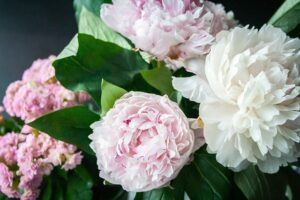
Hosta
Irises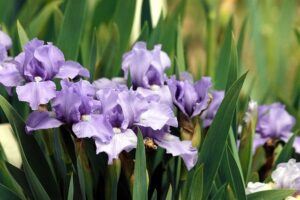
Daylilly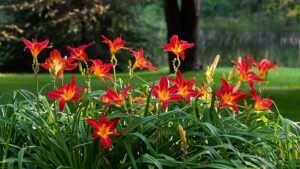
Bee Balm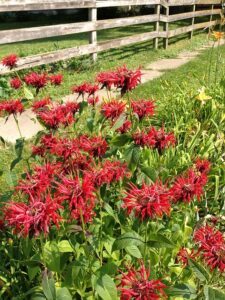
Phlox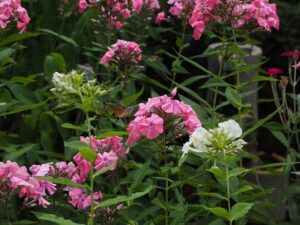
Gaillardia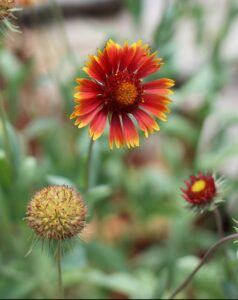
Catmint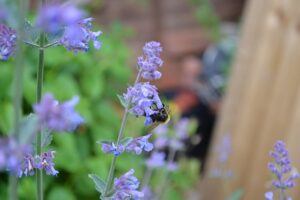
Columbine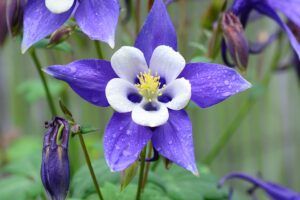
Lilies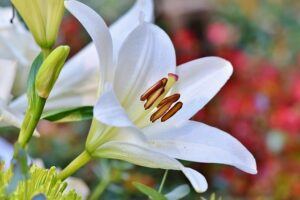
Salvia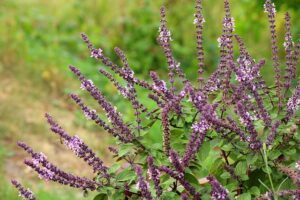
Solomon’s Seal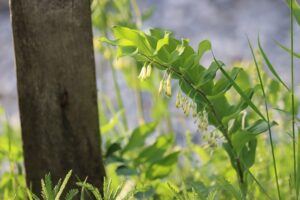
Yarrow
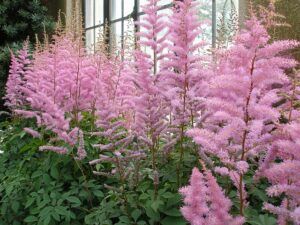
Ground Clematis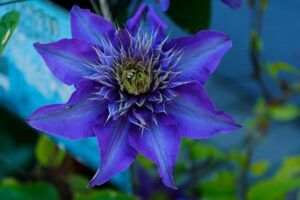
Hardy Begonia
Hollyhock mallow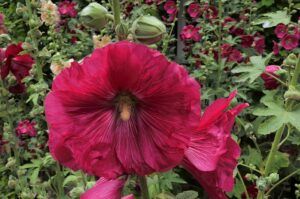
Ladybell 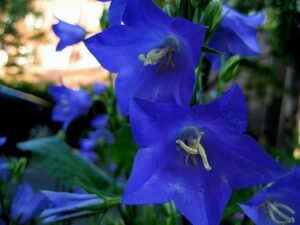
Blazing Star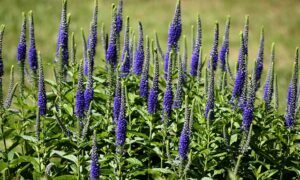
Leave
Crysanthamums (Mums)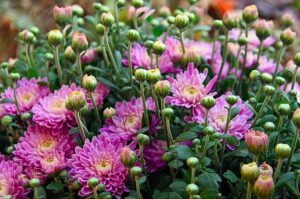
Roses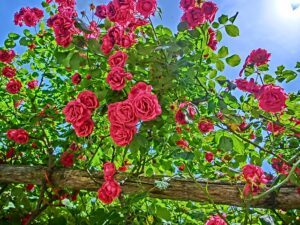
Echinacea (Coneflower)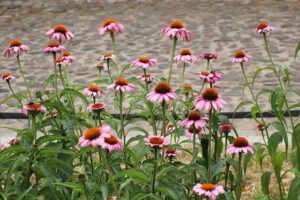
Black-eyed Susan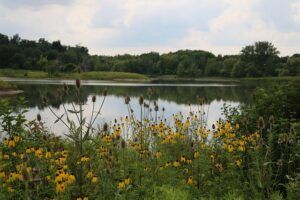
Sedum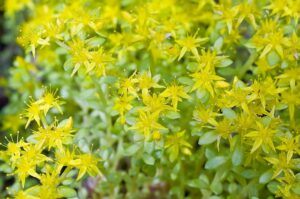
Ornamental Grasses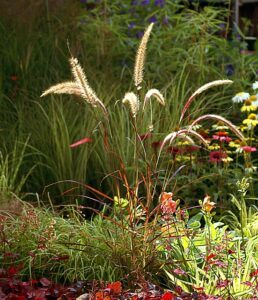
Butterfly Weed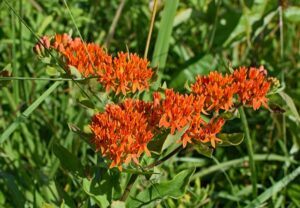
Ferns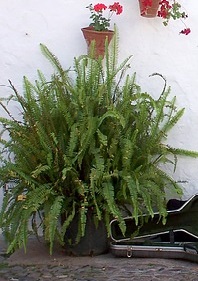
Russian Sage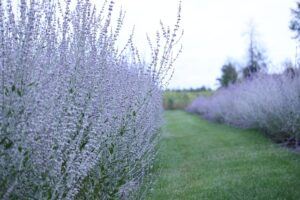
Hibiscus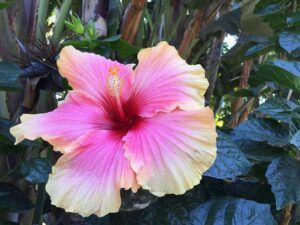
What Should You Use to Prune?
You don’t want to use any tools with rust or that have been previously used to cut diseased or pest ridden plants without a thorough cleaning first. A simple wash with water that has a small amount of bleach will most often suffice for keeping any cross-contamination at bay.
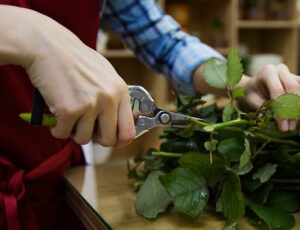 The tools you use to prune are important as well. Make sure your tools are sharp, clean and the appropriate type. Don’t use a pair of pruning shears intended for dainty cut flowers to trim back a woody shrub.
The tools you use to prune are important as well. Make sure your tools are sharp, clean and the appropriate type. Don’t use a pair of pruning shears intended for dainty cut flowers to trim back a woody shrub.
That would damage them very quickly. Keep your tools sharp! It’s important because the cells of the plants are effected very differently cut versus crushed.
The plant can more easily heal and rebound more quickly from a cut than a crush. The more quickly your plant heals, the more quickly it can re-focus on that important root development for next year!
Here are the 12 most common pruning tools for almost any type of plant you may have!
Shears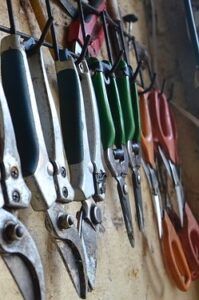
- scissor (looks just like scissors) and anvil (sharpened upper blade againist a flat surface) options
- best for flowers, shrubs and small trees
Anvil Pruners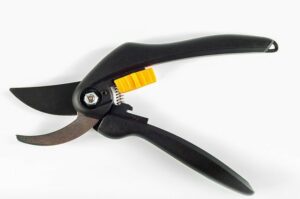
- best for branches (dead branches and twigs best) less than 5/8 of an inch
Ratchet Pruners
- cuts in stages instead of one smooth movement
- reduces strain on the wrist
Bypass Pruners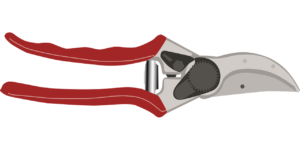
- stronger pruners
- two curved blades
- best for growing/green plants, because they will not damage the live stem
Hedge Shears
- long, straight blades
- cereate straight lines that are best for… you guessed it… hedges!
Floral Scissors and Snips
- super sharp
- best for cut flowers and decorative foliage
Long-hangled Pruners (Loopers)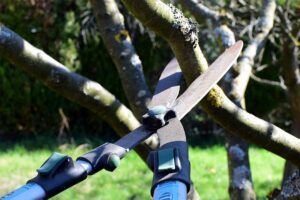
- best for 2.5 inch brances or less
- make cleaner cuts
Pole Pruner (extension/aerial pruners)
- over 8 feet reach, and lightweight
- best for cutting dead branches/ tree limbs 1.25 inches or smaller
Pruning Saw (straight or curved, hand saw)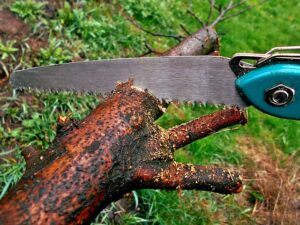
- good for 1.5 inch or larger branches
- very sharp, make clean cuts
- straight best for sap or green wood, curved best for large branches
Grass Shears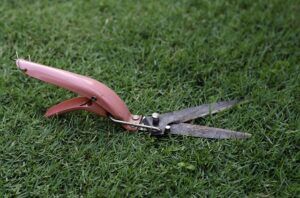
- very long, straight blades
- used for touching up hard to reach places mowers or shrubs can’t reach
Topiary Shears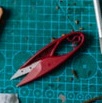
- very heavy duty, great for delicate topiary work
- spring loaded for automatic re-opening, easy to use
- need to be kept very sharp
Fall Pruning Perennials – Time to Get Started!
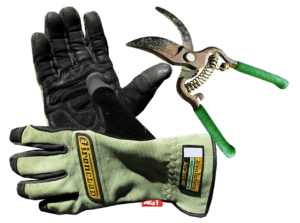 With all the tips and tricks provided, there is nothing left to do but get to it! We all love to experience all the excitement of possibilities that comes with the new growth of Spring; but I find Fall to be one of the most exciting times as well!
With all the tips and tricks provided, there is nothing left to do but get to it! We all love to experience all the excitement of possibilities that comes with the new growth of Spring; but I find Fall to be one of the most exciting times as well!
 All the helter-skelter of the summer months has slowed, and a sense of relief seems to settle on the world. The time for growing as far and as fast as possible is over. Now it’s time to sit back, relax a bit, and get ourselves prepared for the next season of growth and renewal.
All the helter-skelter of the summer months has slowed, and a sense of relief seems to settle on the world. The time for growing as far and as fast as possible is over. Now it’s time to sit back, relax a bit, and get ourselves prepared for the next season of growth and renewal.
However much I personally enjoy the late summer blooms and early fall flowers, the fall pruning tends to leave me with a more satisfied sensation.
All You Need to Know About Fall Pruning Perennials Conclusion
All the different Fall pruning. Fall pruning: annuals. Sad, but necessary to allow the soil to recover a bit better for next spring. Fall pruning: trees. Tough, but necessary to get the kind of shape and health wanted. Fall pruning: perennials. Exciting because every cut back made is potentially a more healthy and established plant for the spring to burst with life and blossoms.
Did you like this article? Please share it on your preferred social media platform and help us grow!
Do you want to send me any stories or pictures of the start (and current picture) of your garden? Send me an email at randi@fairycirclegarden.com
If you have any questions, comments or tips to share with myself or the community, leave a comment below and I’ll get right back to you! You can also reach me on our Facebook and Twitter pages!
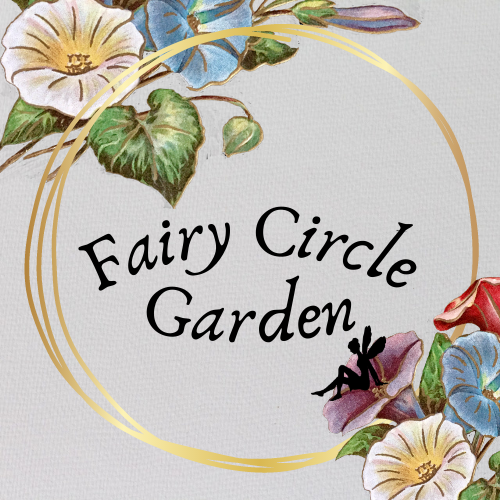
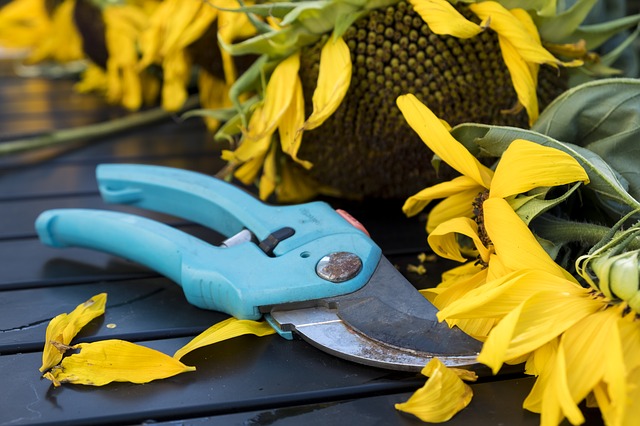
Thank you for this article. I have friends who have started gardening and were talking about only planting in spring. I think if they were to read these they would understand that you can plant anytime and just prune the plants before spring for growth.
It’s true! There are different plants that you are supposed to plant at different times for the best results. No matter what time of year it is, there are things to be done! Not to worry though… When I first started gardening, I was under the same impression that it would be busy busy in the spring and easy peasy the rest of the year. Oh boy was I mistaken! ?
I am always learning new things, and I look forward to learning even more as the years march on!
I loved your article! Thank you very much! I live in the Netherlands, and we have a beautiful Fall with gorgeous golden light, so I can relate very much to what you are saying. Most time, I leave the withered leaves and plants for the protection of the insects and plants. The birds can still find food; even I feed them. I make a house for the hedgehog so he has it warm when he starts to hibernate.
I have a small garden, but a lively fairy garden, that gives coziness for us in Spring to Fall, but protection for the animals and insects in winter.
I also grow some vegetables, so we still have fresh food, like kale. The butterflies love the kale.
I prune some plants in fall, but the most in spring. However, I cut the trees because they need a cut before the next season begins.
Great interesting article! Thank you so much!
It sounds like you have a very lovely garden indeed! I love the idea of a hedgehog house! I am go glad you enjoyed the article! I hope you are staying warm as we head into winter! Thank you so much!